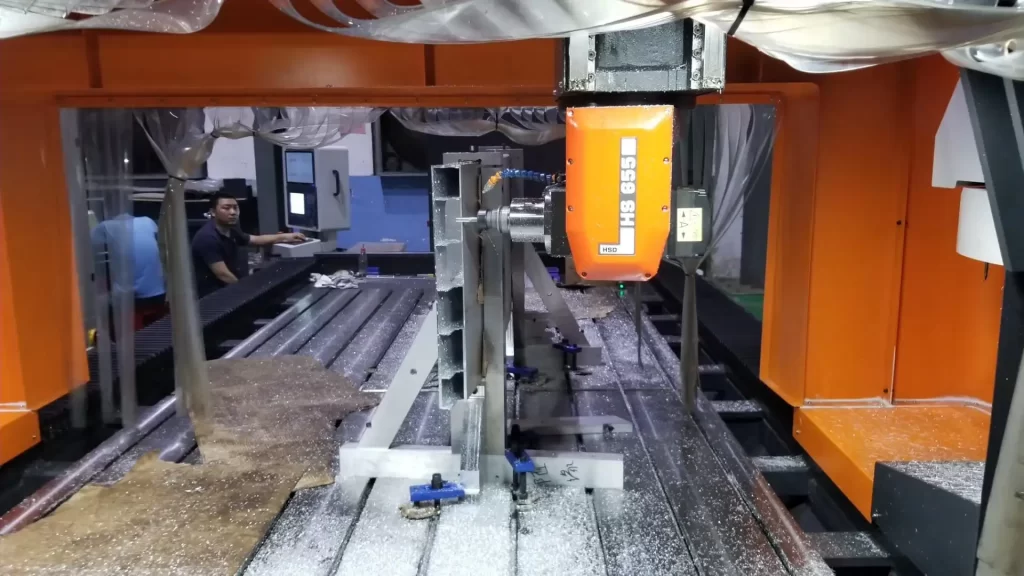8 Core Advantages of CNC Technology Popularization

CNC (Computer Numerical Control) technology has revolutionized traditional manufacturing by precisely controlling machine tools through computer programs. It has not only boosted production efficiency but also driven innovation in product design. From aerospace to automotive manufacturing, from medical devices to personalized furniture, CNC technology is ubiquitous, and its widespread adoption is remarkable. The popularity of CNC stems from its unique advantages in precision, production efficiency, versatility, and seamless integration with modern technologies. This article will delve into these reasons, revealing how CNC has become a cornerstone of modern manufacturing and a transformative force across various industries.
1. Precision and Accuracy
The core advantage of CNC technology lies in its exceptional precision, achieving tolerances as fine as ±0.001 millimeters, far surpassing traditional manual machining. Computers precisely control every minute movement of the machine tool through pre-set programs, completely eliminating human error and ensuring that parts strictly conform to design specifications. This high level of accuracy makes CNC an ideal choice for manufacturing complex components. For instance, in the aerospace sector, Boeing utilizes CNC technology to produce turbine engine blades, where the surface accuracy of each blade must be flawless to ensure efficient engine operation and safety. In the medical industry, CNC is used to create orthopedic implants and dental prosthetics, with micron-level precision guaranteeing perfect fit with the human body. Compared to traditional machining, CNC not only enhances product quality but also establishes a foundation of reliability for critical industries.
2. Efficiency and Productivity
The automated nature of CNC significantly boosts production efficiency. Studies indicate that CNC equipment can reduce production time by 30%-40% and decrease downtime by over 50%. Traditional machining relies on manual operation, with efficiency limited by worker skill and fatigue, whereas CNC supports 24/7 continuous operation, requiring only periodic maintenance to sustain high output. In the automotive industry, CNC machine tools can rapidly process engine blocks and transmission gears, meeting the demands of large-scale production. For example, Changan Automobile, by introducing CNC production lines, shortened the production cycle of key components by 25%, significantly improving its market response speed. In the electronics industry, CNC is used to produce mobile phone casings and circuit board components, ensuring both high volume and high quality. The stability of automation also reduces human error, providing businesses with reliable production assurance.
3. Cross-Industry Versatility
The versatility of CNC technology makes it a universal solution across diverse sectors, including aerospace, automotive, woodworking, metal fabrication, and medical fields. It can process metals, plastics, wood, composite materials, and even ceramics, meeting the unique requirements of different industries. In woodworking, CNC engraving machines produce custom furniture with intricate designs through precise cutting and carving, highly sought after in the high-end market. In the medical field, CNC is used to manufacture custom prosthetics and surgical guides, precisely adapting to individual patient differences. Furthermore, CNC is widely employed in rapid prototyping, helping startups quickly transform design concepts into physical products. For example, a domestic drone startup utilized CNC to machine carbon fiber fuselage prototypes, completing product validation in just one week and accelerating its market entry.
4. Long-Term Cost-Effectiveness
Despite the higher initial investment in CNC equipment, its long-term cost-effectiveness is significant. Thanks to high-precision machining, CNC can reduce material waste by 20% and rework costs by 40%. For instance, a small metal processing plant that introduced a CNC milling machine saw its scrap rate drop from 15% to 5%, achieving a return on investment within six months. The automation of CNC also lowers labor costs, as operators primarily monitor the equipment rather than performing continuous manual operations. For small and medium-sized enterprises (SMEs), desktop CNC devices offer a low-cost entry point, allowing them to also benefit from advanced manufacturing technology. Large manufacturers, meanwhile, achieve economies of scale through CNC production lines, further spreading costs. Regardless of business size, CNC provides flexible cost optimization solutions.
5. Integration with Modern Technologies
The combination of CNC technology with CAD (Computer-Aided Design) and CAM (Computer-Aided Manufacturing) software enables a seamless transition from design to production. Designers create 3D models in CAD, and CAM software automatically generates machining instructions (G-code), which are directly transmitted to the CNC equipment, completing the entire process in just a few hours. In the era of smart manufacturing, CNC collects real-time production data via IoT sensors, supporting dynamic adjustments. For example, a domestic smart factory, by integrating CNC with IoT, monitors tool wear in real-time, boosting production efficiency by 15%. The introduction of artificial intelligence further enhances CNC’s potential, such as predicting equipment maintenance needs through machine learning, thereby reducing unexpected downtime. CNC is not merely a manufacturing tool; it is a core component of the smart manufacturing ecosystem.
6. Flexibility and Customization
The flexibility of CNC equipment gives it an advantage in rapidly changing markets. By simply reprogramming, machines can switch to producing different designs without complex hardware modifications. This characteristic is particularly well-suited for small-batch production and rapid prototyping. In the consumer electronics industry, companies use CNC to quickly adjust mobile phone casing designs, meeting consumer demand for personalization. For example, a domestic brand used CNC to complete a new phone case prototype within 48 hours, gaining a first-mover advantage in the market. In product development, CNC shortens the cycle from concept to finished product, helping businesses respond quickly to market demands and enhance competitiveness.
7. Lowering Skill Barriers
Compared to traditional machining, CNC requires less manual skill from operators, with training focusing on software programming and equipment maintenance. Beginners can master CNC operation through a few weeks of online courses or corporate training. For example, a small furniture factory, through short-term training, enabled employees with no prior experience to skillfully operate CNC engraving machines, quickly entering the custom furniture market. While traditional machining often requires years of accumulated experience, the convenience of CNC lowers industry entry barriers, providing more opportunities for SMEs and individual enthusiasts. Nevertheless, CNC still requires certain specialized knowledge, such as G-code programming and equipment calibration, to ensure efficient production.
8. Safety and Consistency
The automated operation of CNC significantly enhances workplace safety. Equipment is fitted with protective covers, automatic shutdown functions, and remote monitoring systems, reducing the risk of operators coming into contact with hazardous tools. Studies show that accident rates in CNC workshops are 30% lower than in traditional workshops. Furthermore, CNC ensures that quality deviations between production batches are less than 0.1%, achieving a high degree of consistency. In the electronics industry, CNC-produced circuit board components have virtually zero defects, ensuring stable product performance. High quality consistency not only reduces enterprise quality inspection costs but also enhances market reputation, especially in industries with stringent reliability requirements.



